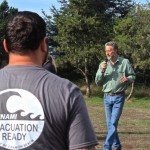NEW ORLEANS, LA.— The City of New Orleans and the Federal Emergency Management Agency (FEMA) are set to host a flood insurance workshop for the public in September. Residents and other property owners are encouraged to attend to gain a better understanding of how recent flood map changes will affect their flood insurance. The Sept.15 workshop is free, but seating is limited, so attendees must register in advance. For more information and to register, visit www.OrleansParishFloodWorkshop.eventbrite.com.
The proposed Flood Insurance Rate Maps (FIRMs) for Orleans Parish are finalized and will become the effective maps on Sept. 30, 2016. These maps are available online at www.Maps.RiskMAP6.com. Residents can view information about their property by navigating to their state, parish and local address.
FEMA is holding a similar, more technical workshop for insurance and real estate professionals tomorrow, Friday, Aug. 26 at City Hall. Registration for this event is now closed. Residents, renters and property owners are encouraged to register for the Sept. 15 flood insurance workshop.
About FEMA Risk MAP
New flood maps are developed as part the FEMA Risk Mapping, Assessment and Planning (Risk MAP) program. Risk MAP assists communities nationwide to assess flood risks and engage in mitigation planning to avoid or minimize damage in the face of future disasters. Through more precise flood maps, risk assessment tools and outreach support, Risk MAP strengthens local communities’ ability to make informed decisions about reducing risk.
FEMA’s mission is to support our citizens and first responders to ensure that as a nation we work together to build, sustain, and improve our capability to prepare for, protect against, respond to, recover from, and mitigate all hazards. Follow us on Twitter at http://twitter.com/femaregion6, and the FEMA Blog at http://blog.fema.gov.
See original:
Flood Insurance Workshop for residents to be hosted by FEMA and City of New Orleans




